In the quest to rank high in the search engine results pages, most content marketers often fall into the trap of neglecting their readers and instead, they focus more on satisfying the search engines.
However, bear in mind that search engines can never replace your users. Search engines will rank your pages but they can’t click on your listings, and they can’t share your posts. Think about it.
The best method is to create SEO-friendly content that users will love. Creating high-quality content is simple. Simply follow the same on-page optimization tips and watch your content reach a wider audience via search engines:
i). Create attractive and keyword-rich headline: In copywriting, the most important part of your copy is the headline or title. When creating content that users will fall in love, spend some time to make your headline attractive. According to Brian Clark, “8 out of 10 people will read your headline.
To make your headline attractive, make it clear and include power words, such as:
- Best
- Smart
- Effective
- Hilarious
- Beautiful
- Proven
- Great
- Deadly
- Powerful
- Secrets
…And so much more.
Second, make sure your headline is optimized for one keyword (preferably, a long-tail keyword). Include the keyword closer to the beginning of the headline for better results.
So if your chosen keyword is “leather backpacks for camping” here’s how you can add power words to it to make your headline irresistible and Google-friendly:
- 7 Beautiful Leather Backpacks for Camping
- How to Buy Leather Backpacks for Camping: The Buyer’s Guide
- Top-Rated Leather Backpacks for Campaign You Should Know
Here’s a content headline that contains a power word, and optimized for a keyword:
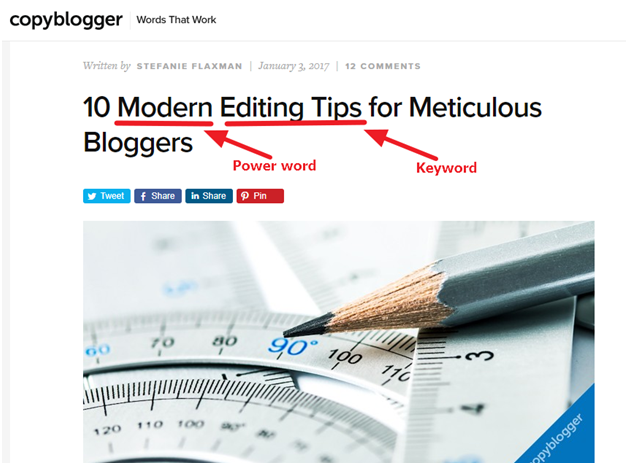
ii). Create original content: Although Google may not penalize your website for a few pages that contain duplicate content — your users want original ideas, thoughts, and a new way of doing things.
Sure, we’re not the first to write a post on the “complete guide to SEO,” but we chose to make our content 100% unique. We got some insights from other websites (and you should), but don’t outright copy everything word for word.
If you choose to curate content instead from other websites, make sure you add your own unique ideas. Your content will stand out from the pack.

Research extensively, read voraciously and make a deliberate effort to create only useful and original content. Remember that no two pages with the same content can rank in Google first page. Each of them must deliver true value.
When you’re in doubt, use Copyscape or Grammarly to check for plagiarism. Then modify your content until it’s valuable, formatted in your own voice, and truly unique.
iii). Format your subtitles with header tags: By default, the main headline or title usually have the H1 or H2 tag, depending on the WordPress theme you’re using.
For your subtitles, you should use heading tag <H2> and a child-sub-title can have the <H3> tag. Formatting your content this way will make it easier to scan, and users will not be bored.
iv). Place keywords at strategic locations: No doubt, search engines use the keywords on a page to determine what the page should rank for. Therefore, certain parts of your page should be optimized for the target keywords.
Include the keyword in the headline, in the URL (to show the relevance of the page), in the first paragraph (use LSI keywords), in the headings as well as images.
Caution: Don’t over-optimize your page for any reason. If the keyword doesn’t sound good or natural, and there are no related terms, then don’t use it. Just focus on creating value for the user.
v). Link to your internal pages: Search engines follow links to crawl and index other pages as well. To help search spiders index your new page quickly, once you publish it, go to one of your archived pages and include a link to your new post using a relevant anchor text.
Also, from your new post, link to your internal pages. Interlinking your pages without exact match keywords is advisable. It’ll help users find other useful pages on your website.
vi). Link out to credible and relevant resources: Link neighborhoods is important to search engines. Link neighborhood is simply the pages you linked to from your own website. As a rule of thumb, link out to credible and relevant resources.
As much as possible, link out to content-rich pages and other resourceful pages where your website visitors can learn something new and find value.
Also, don’t use rich anchor texts to link out to other websites. Google will likely flag it as spam. The link should flow naturally with the rest of the paragraph. Here’s an example from MarketingProfs:
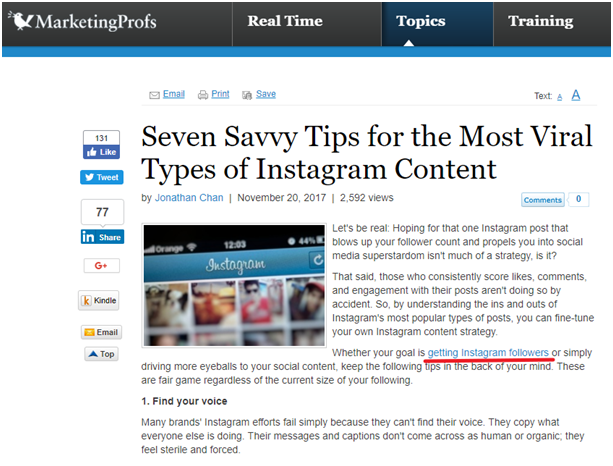
vii). Optimize images: When you optimize the images on your page, there is a chance that Google will rank them in the search result, this time in image search. Anyone can do this easily. Here’s how:
- Compress your images so they load up quickly
- Use a relevant file name
- Add a Title and Alt Text (hint: use related terms)
- Avoid stock photos, use data-driven visuals (e.g., graphs, charts, screenshots)
In all, creating high-quality content is damn possible when you concentrate on solving user’s problems and answering their questions.
In summary:
i). Put yourself in your user’s mind: It’s vital that you know who your audience is, as we have covered earlier in this post, and then create content that will help them solve their problems.
ii). Avoid keyword stuffing: While this used to be a common practice, it’s no longer acceptable. Stuffing keywords in your content offer nothing to users, but rather, it increases your risk of being penalized by Google.
iii). Implement the various SEO basics: This means including your target keyword in the title, crafting a persuasive meta description with your keyword naturally added, having a keyword-rich URL, using the various heading tags (H1, H2, H3, etc.) in your content, and ensuring that your image Alt tag is optimized.
iv). Make your content scannable and easy to read: We’re undoubtedly in the age of information overload. To help readers consume your content, it’s important to give it to them in an easily-to-scan format. A few ways to achieve this include:
- Utilize bullets and numbering for lists.
- Avoid large blocks of content.
- Italicize or bold words or phrases to make key points stand out.
- Use H2 or H3 tags as subheads to break up content even further.
v). Publish long-form content: Search engines and users have a preference for long-form content. Don’t just scratch the topic, go in-depth and make it worthwhile. Rand Fishkin, the Founder of Moz said that publishing a comprehensive content is the quickest way to outsmart your competitors.
Essentially, your blog posts, articles, and other written content should be 2,000+ words. Why? Because a study conducted by SerpIQ on the Importance of Content Length showed that the top 10 results pages contain a minimum of 2,000 words, the page that ranked at #1 has approximately 2,450 words.
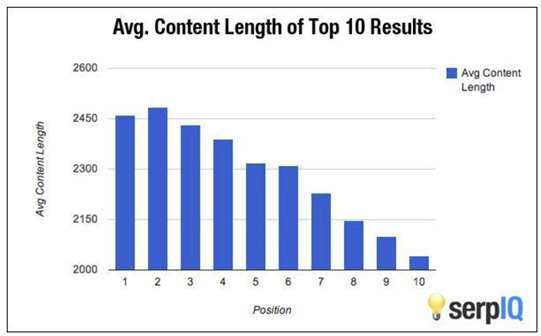

When writing a slug for your content page, avoid stop words such as “a”, “the”, “and”, and so on. Add the words that matter (and make sure that at least one of the words in your slug is the keyword you’re aiming to rank).
Use short slugs (2 – 3 words) and you will see better results. That’s exactly what Copyblogger, Brian Clark, and the guys at Yoast do.
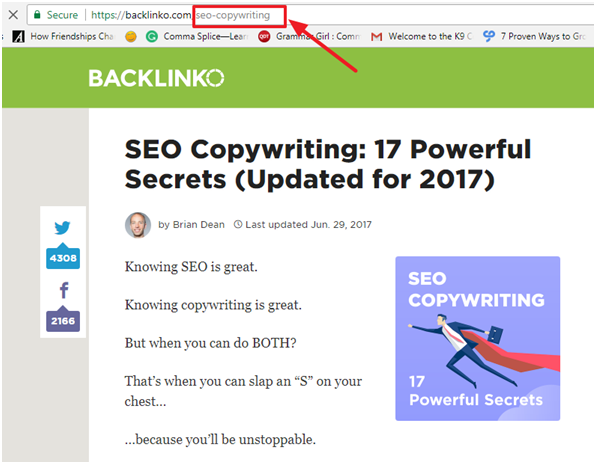
vii). Use odd number in title tags: Title tags and headlines with numbers tend to get more clicks than those without. Especially when it’s an odd number (like 5, 7, 11, 13).
According to a study by CMI, you could increase CTR by 20% if you use odd number in your title tag. So, instead of using “8”, use “7” instead in your title.

viii). Front loading keywords in title: When your web page appears in the search results, that’s just the beginning because you’re still competing and hoping to get the clicks. That’s why front-loading your primary keyword in your title tag is the best way to steer a searcher’s eye to your listings.
So if your target keyword is “Healthy Office Snacks,” for example, minimize writing headlines like these:
How to Get Healthy Office Snacks Every Month
What are the Health Benefits of Healthy Office Snacks?
But instead, front load the keyword in your headlines like these:
Healthy Office Snacks: How to Get Them Yummy Every Month
5 Healthy Office Snacks Subscription Company That are Affordable
Healthy Office Snacks: The 13 Unknown Health Benefits You Should Know
Here’s a good example:
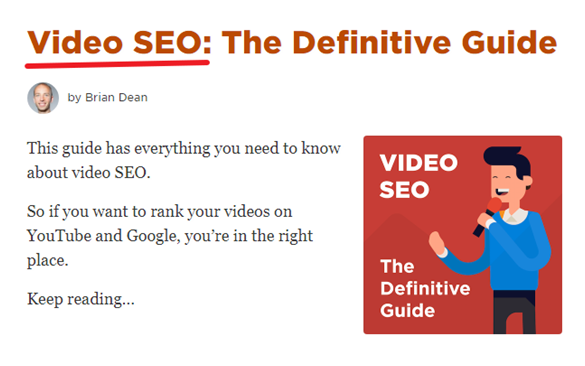
ix). Use multiple content formats: In order to increase the perceived value of your written content, you have to add multimedia elements to it. So don’t just publish a blog post, but add relevant infographic excerpts, images, video, Slide presentations, and podcasts.
Kate Erickson and John Lee Dumas of Entrepreneur on Fire records and embed podcast feature on their blog posts. Thus, increasing the value and giving people the opportunity to either read or listen or do both (I love to listen while I’m reading).
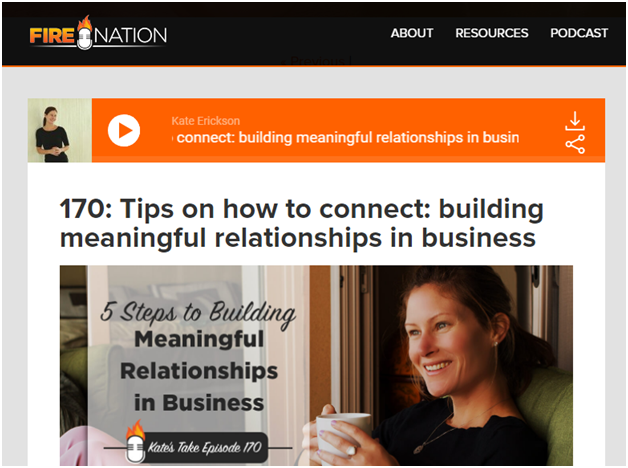
x). Let content flow naturally: This shouldn’t be an issue if you’ve followed all the other guidelines above.
Keyword Research for SEO
Link Building Strategies